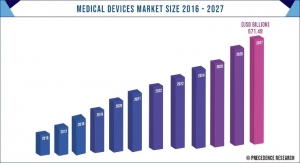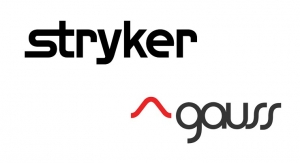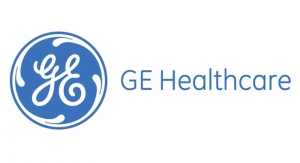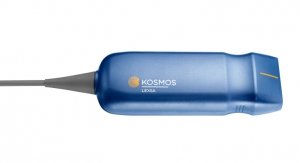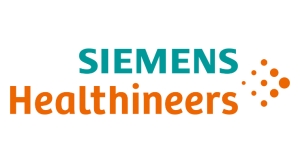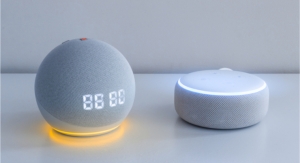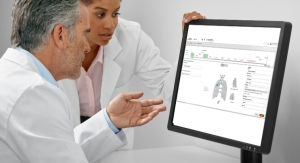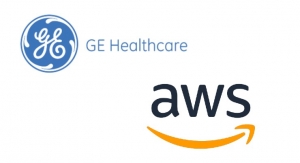Maria Shepherd, President and Founder, Medi-Vantage07.26.18
Artificial intelligence (AI) has the potential to truly augment human activity through medtech. In their most simple form, AI applications in healthcare consist of a collection of technologies that enable machines to sense, comprehend, predict, act, and learn. Autonomous AI systems have substantial potential to improve healthcare productivity, lower healthcare costs, and enhance accessibility and quality for patients. The first application for AI-based machines, as discussed at the World Medical Innovation Forum (held in April 2018), is to execute healthcare administrator and clinical healthcare functions. Current technologies are limited, however, because they are algorithm based. The future of AI will make the leap past algorithm-only tools to become indispensable devices for patients, providers, physicians, and payers.
Why This Is Important
The potential to drive improvements in quality, cost, and access has made AI a notable catch phrase in healthcare. The AI health market is growing rapidly and is forecasted to reach $6.6 billion by 20211 (Table 1).
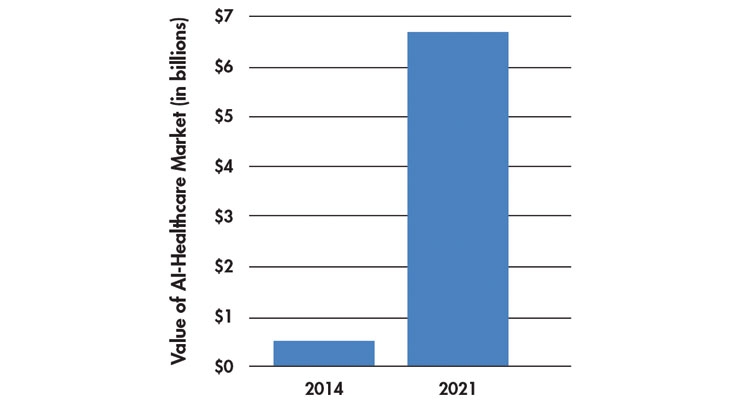
Table 1: Forecasted health AI market size1
AI Applications in Medtech
Despite its ongoing business issues, GE Healthcare has a global installed base of 500,000 imaging devices.2 GE Healthcare reports that its decade-long partnership with NVIDIA has resulted in plans to integrate NVIDIA’s AI platform with GE Healthcare’s imaging technologies.
AI-supported imaging is an advance that improves the speed and accuracy of imaging diagnostics. The two companies are collaborating to leverage AI to improve the speed and accuracy of computerized tomography (CT) scans—a potential $3 billion market (according to the data in Table 2). NVIDIA has algorithms engineered to detect lesions in the liver and kidney to improve clinical outcomes. Unnecessary follow-ups are reduced, helping patients with renal function issues by reducing the percentage of scans that are judged to be non-interpretable.
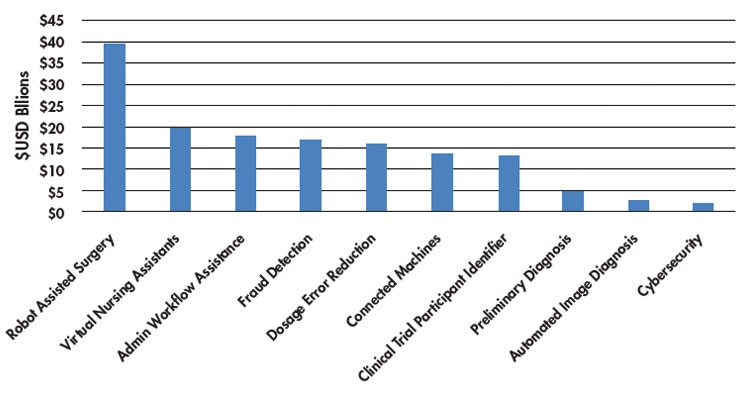
Table 2: Estimated future value of top 10 AI applications1
The Use of AI in Diagnosing Diabetic Retinopathy
In April 2018, the U.S. Food and Drug Administration (FDA) cleared an AI-based diagnostic system from IDx for the autonomous detection of diabetic retinopathy—a principal cause of impaired vision and blindness. IDx boasts the first-ever FDA authorization for commercialization and will begin the safe and responsible use of AI in medicine.
The U.S. healthcare system struggles with the massive burden of patient care for people with diabetes. Globally, an estimated 285 million people have Type 2 diabetes mellitus, of which, approximately 33 percent have a form of diabetic retinopathy.3,4 One third of patients have vision-threatening diabetic retinopathy, including diabetic macular edema. If physicians can diagnose diabetic retinopathy in its early stages, future loss of vision and blindness can be prevented.
The use of the IDx tool allows screening of patients with diabetes for diabetic retinopathy. It is estimated that approximately 50 percent of these patients do not see an eye doctor on an annual basis5 and the IDx AI-based technology can be used in a general practitioner’s office. The IDx system is an autonomous, AI-based system that diagnoses the patient without the need for a trained ophthalmologist to interpret the findings, widening the use of the diagnostic tool to physicians who may not specialize in eye care.
We Have Needed a Tool Like AI for a Long Time
Healthcare institutions will need an AI-trained workforce and AI will change the way healthcare work is performed. AI will fill the gaps we know are coming, such as the labor shortage in healthcare. Through AI, we empower clinicians and give healthcare workers the tools they need to increase their productivity. Think of the value your products will bring with AI and the ability to gain clinician face-time and recognition as they use AI to enhance efficiency, quality, and outcomes (Table 3).
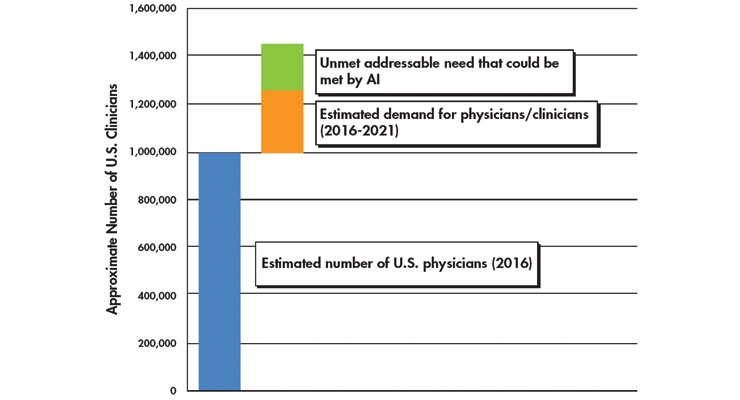
Table 3: AI can address future unmet clinical demand (2026)1,6
The Medi-Vantage Perspective
In almost every strategy research project we manage, when we look at adjacent technologies in consumer markets, we hear about the utilization of AI. There is a broad opportunity to integrate AI technology into medtech product strategies. Someday, even the most common medical devices will have an AI component.
References
Maria Shepherd has more than 20 years of leadership experience in medical device/life-science marketing in small startups and top-tier companies. After her industry career, including her role as VP of marketing for Oridion Medical where she boosted the company valuation prior to its acquisition by Covidien/Medtronic, director of marketing for Philips Medical, and senior management roles at Boston Scientific Corp., she founded Medi-Vantage. Medi-Vantage provides marketing and business strategy as well as innovation research for the medical device industry. The firm quantitatively and qualitatively sizes and segments opportunities, evaluates new technologies, provides marketing services, and assesses prospective acquisitions. Shepherd has taught marketing and product development courses and is a member of the Aligo Medtech Investment Committee (www.msbiv.com). She can be reached at 855-343-3100, ext. 102, or at mshepherd@medi-vantage.com. Visit her website at www.medi-vantage.com.
Why This Is Important
The potential to drive improvements in quality, cost, and access has made AI a notable catch phrase in healthcare. The AI health market is growing rapidly and is forecasted to reach $6.6 billion by 20211 (Table 1).

Table 1: Forecasted health AI market size1
AI Applications in Medtech
Despite its ongoing business issues, GE Healthcare has a global installed base of 500,000 imaging devices.2 GE Healthcare reports that its decade-long partnership with NVIDIA has resulted in plans to integrate NVIDIA’s AI platform with GE Healthcare’s imaging technologies.
AI-supported imaging is an advance that improves the speed and accuracy of imaging diagnostics. The two companies are collaborating to leverage AI to improve the speed and accuracy of computerized tomography (CT) scans—a potential $3 billion market (according to the data in Table 2). NVIDIA has algorithms engineered to detect lesions in the liver and kidney to improve clinical outcomes. Unnecessary follow-ups are reduced, helping patients with renal function issues by reducing the percentage of scans that are judged to be non-interpretable.

Table 2: Estimated future value of top 10 AI applications1
The Use of AI in Diagnosing Diabetic Retinopathy
In April 2018, the U.S. Food and Drug Administration (FDA) cleared an AI-based diagnostic system from IDx for the autonomous detection of diabetic retinopathy—a principal cause of impaired vision and blindness. IDx boasts the first-ever FDA authorization for commercialization and will begin the safe and responsible use of AI in medicine.
The U.S. healthcare system struggles with the massive burden of patient care for people with diabetes. Globally, an estimated 285 million people have Type 2 diabetes mellitus, of which, approximately 33 percent have a form of diabetic retinopathy.3,4 One third of patients have vision-threatening diabetic retinopathy, including diabetic macular edema. If physicians can diagnose diabetic retinopathy in its early stages, future loss of vision and blindness can be prevented.
The use of the IDx tool allows screening of patients with diabetes for diabetic retinopathy. It is estimated that approximately 50 percent of these patients do not see an eye doctor on an annual basis5 and the IDx AI-based technology can be used in a general practitioner’s office. The IDx system is an autonomous, AI-based system that diagnoses the patient without the need for a trained ophthalmologist to interpret the findings, widening the use of the diagnostic tool to physicians who may not specialize in eye care.
We Have Needed a Tool Like AI for a Long Time
Healthcare institutions will need an AI-trained workforce and AI will change the way healthcare work is performed. AI will fill the gaps we know are coming, such as the labor shortage in healthcare. Through AI, we empower clinicians and give healthcare workers the tools they need to increase their productivity. Think of the value your products will bring with AI and the ability to gain clinician face-time and recognition as they use AI to enhance efficiency, quality, and outcomes (Table 3).

Table 3: AI can address future unmet clinical demand (2026)1,6
The Medi-Vantage Perspective
In almost every strategy research project we manage, when we look at adjacent technologies in consumer markets, we hear about the utilization of AI. There is a broad opportunity to integrate AI technology into medtech product strategies. Someday, even the most common medical devices will have an AI component.
References
- http://bit.ly/mpo180707
- http://bit.ly/mpo180702
- http://bit.ly/mpo180704
- http://bit.ly/mpo180705
- http://bit.ly/mpo180706
- http://bit.ly/mpo180708
Maria Shepherd has more than 20 years of leadership experience in medical device/life-science marketing in small startups and top-tier companies. After her industry career, including her role as VP of marketing for Oridion Medical where she boosted the company valuation prior to its acquisition by Covidien/Medtronic, director of marketing for Philips Medical, and senior management roles at Boston Scientific Corp., she founded Medi-Vantage. Medi-Vantage provides marketing and business strategy as well as innovation research for the medical device industry. The firm quantitatively and qualitatively sizes and segments opportunities, evaluates new technologies, provides marketing services, and assesses prospective acquisitions. Shepherd has taught marketing and product development courses and is a member of the Aligo Medtech Investment Committee (www.msbiv.com). She can be reached at 855-343-3100, ext. 102, or at mshepherd@medi-vantage.com. Visit her website at www.medi-vantage.com.



